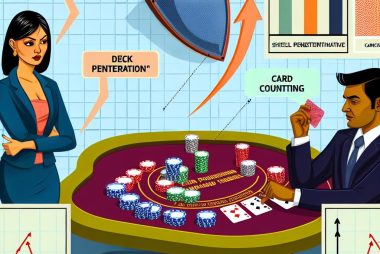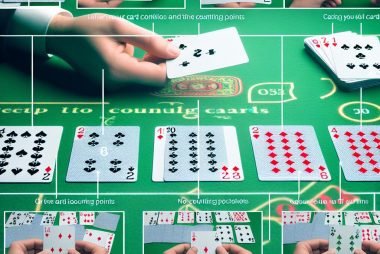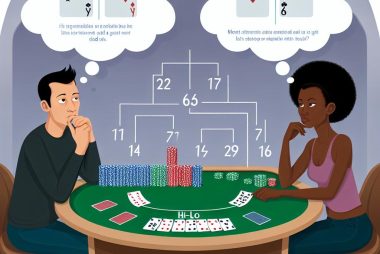The impact of deck penetration on card counting
The Role of Deck Penetration in Card Counting
When engaging in card counting in blackjack, one of the most crucial factors to consider is deck penetration. This term refers to how deeply into the deck or shoe of cards the dealer goes before reshuffling. The depth of penetration can significantly impact the effectiveness of card counting strategies and is an essential element for players who wish to optimize their gameplay.
Understanding Deck Penetration
In the complex game of blackjack, players use card counting to keep track of the ratio of high cards, such as 10s and Aces, compared to low cards. The presence of a higher number of these high cards within the remaining deck increases the player’s advantage, boosting the chances of hitting blackjacks and achieving stronger hands. This is where the concept of deck penetration becomes vitally important.
Deck penetration is expressed as a percentage of the shoe that is dealt before a reshuffle takes place. To illustrate, with a six-deck shoe, a penetration of 75% means that four and a half decks are dealt before the cards are shuffled again. When penetration is deeper, it provides card counters with a better opportunity to accurately estimate the proportion of high-value cards still in play, thereby enhancing their strategic advantage.
The Balance Between Risk and Reward
The relationship between deck penetration and card counting is a double-edged sword. If a dealer reshuffles the cards too early, the card counter’s edge diminishes because their calculations lose reliability. However, when penetration is deeper, players can maximize the potential of their counting systems, thus increasing their potential profits.
Yet, it’s crucial to balance the depth of penetration with the risk of detection. Casinos are constantly on the lookout for card counters and might adjust their penetration level if they suspect any suspicious activities. This is an important consideration for players since being detected as a counter can lead not only to a loss of winnings but also to being banned from the premises.
Optimal Penetration and Strategy Adjustments
There isn’t a one-size-fits-all answer to what the ideal penetration percentage should be, but many experienced players recommend a penetration range of at least 70% to 80% for effective card counting. Such a penetration depth offers enough data to make a reliable assessment of the deck’s composition, giving the counter a tangible advantage to exploit.
Precision and practice are imperative when adjusting your betting and playing strategies according to deck penetration. When high penetration levels are observed, counters can place larger bets or play more aggressively if the deck composition seems favorable. These adjustments in betting strategy can greatly improve outcomes, provided they are made with a sharp awareness of the situation.
Furthermore, players must be equipped with the ability to swiftly adapt their decisions based on varying penetration levels throughout the game. This skill requires significant practice and understanding of the dynamics of blackjack, reinforcing the need for continuous learning and refinement of strategy.
Conclusion
Understanding and making use of deck penetration is vital for any serious card counter aiming to enhance their performance in blackjack. While deeper penetration typically increases the player’s edge, it is crucial to remain aware of the associated trade-offs, particularly the increased risk of detection by casino staff. Achieving mastery in this aspect, complemented by a robust counting system, can significantly boost a player’s success in the field of blackjack.
For those interested in refining their card counting techniques and exploring advanced strategies, a wealth of online resources and guides are available, offering deeper insights into optimizing your approach. These materials can provide invaluable advice and strategies for players committed to improving their skills and succeeding in the dynamic and exciting world of blackjack.
Card counters who take the time to understand the nuances of deck penetration stand to greatly enhance their profits and enjoy the game at a more strategic level. By continuously honing their abilities and capitalizing on favorable deck compositions as they arise, these players position themselves for a fulfilling and potentially lucrative blackjack experience.











